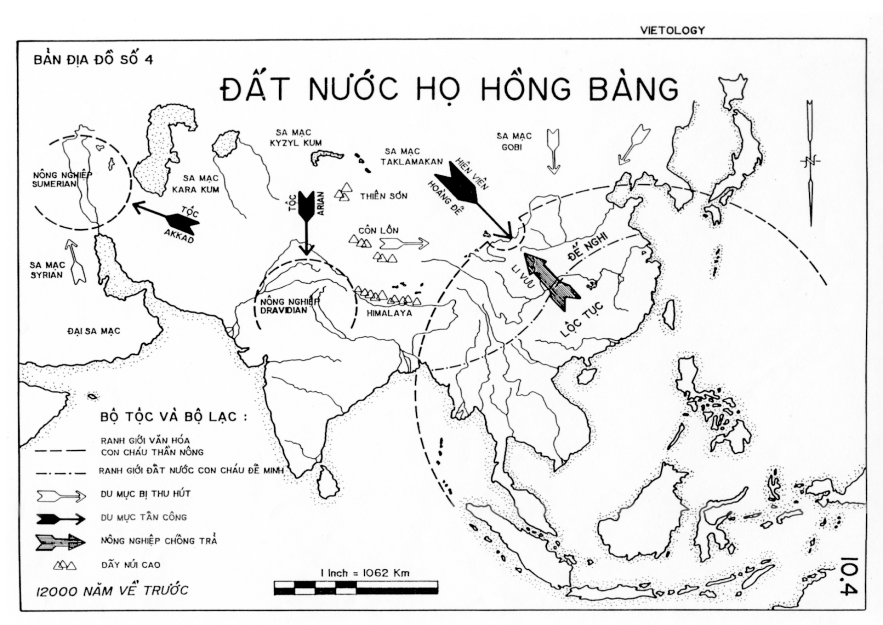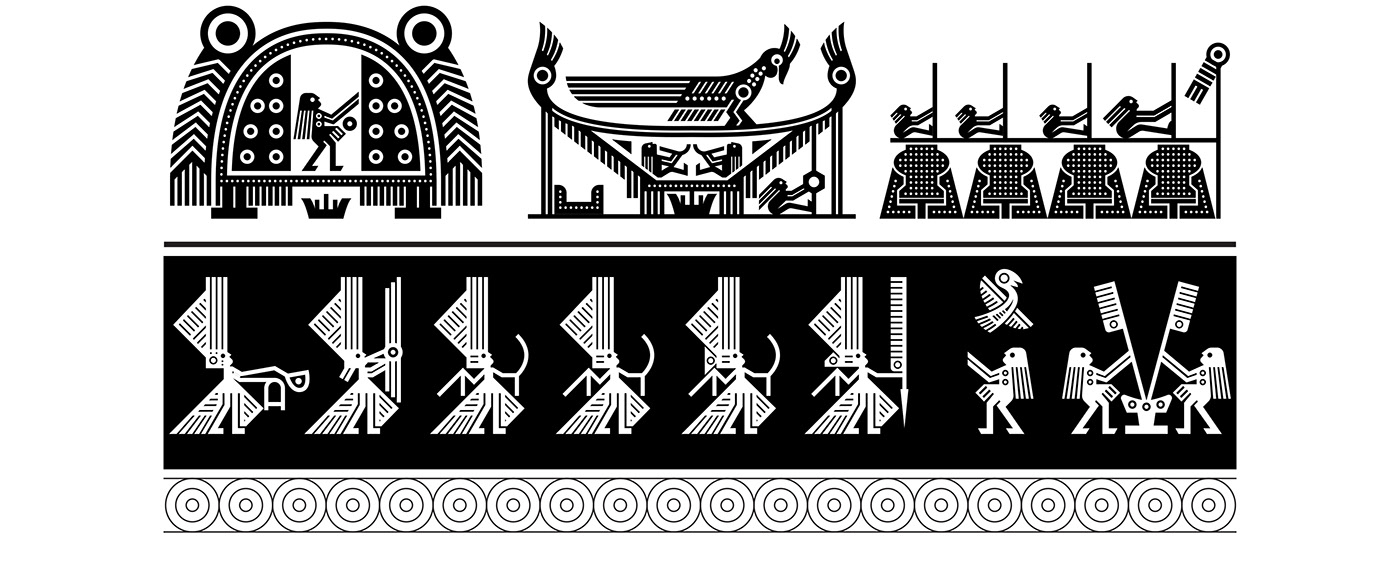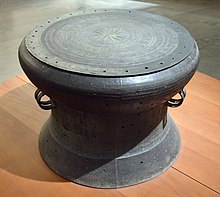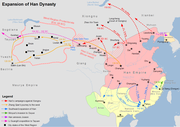Vietnam: East or Southeast Asian?
https://youtu.be/G1bU408YtJI
Bạn Biết Gì Về Bộ Tộc Người Việt Cổ Minangkabau Ở Indonesia?
https://youtu.be/tL2bdC_AIHc?si=ORTlxJM3GjGkf_KK
Ancient trade routes used by the Bronze Drums
Các tuyến đường thương mại cổ xưa thường được sử dụng Trống đồng

2 Người Minang kabau tại Indonesia có nguồn gốc Việt Nam?
https://www.youtube.com/embed/hogx_Quu0e0?si=EHBs4OOXlrJfjGKS


Map of the “Battle of Zhuolu” / trận Trác Lộc 2704 BC
Vietnam is an ancient country
THE VIETNAMESE RACE IS A BIG RACE
Vietnam is an ancient country
3118 BC Nước Xích Thần Đế Nghi cai quản
2879 BC Nước Xích Quỷ = Kinh Dương Vương trị vì
2879 BC Hong Bang Dynasty - Văn Lang
3200 BC Iran (Persia)
3150 BC Egypt
-----------------------
Timeline of Vietnam
9


10

11

Kinh Dương Vương
King of Jingyang

Kinh Dương Vương

Nếp sinh hoạt thời Kinh Dương vương

Kiến Trúc thời Kinh Dương vương phỏng theo sự mô phỏng trên Trống Đồng

Writing in Vietnam
https://www.youtube.com/embed/zI9AF7sj1Bk?si=tk0NaYbFMkfbvP-1
The Vietnamese Language
https://youtu.be/vQNud-Ra2Gw?si=eQjWFfA-sG1eywe5
The Magic of Vietnamese Chữ Nôm Chinese Characters 越南 漢字
https://youtu.be/Yow52ReCXyA?si=vD7eaOtp1UPEN0mG
Vietnamese used to look very different…
https://www.youtube.com/embed/Pot8-i1Xp5U?si=XNKHsY-vY9UTytcF
Chữ Hán and chữ Nôm = both Chinese and Vietnamese has the writing characters look similar, but the grammar and vocabulary are totally different. As a result, the Chinese never fully understand what the old Vietnamese writing is about but we do know what Chinese are written, for exemple, during the battle of Ming troops, they stove our document, but they can not read information, but when we caputure their document, we read and understand what they will attack us.
French and Quốc Ngữ = both French and Chữ Quốc Ngữ-Vietnamese is writing system are Latin based, the latin letters writirng are look alike, but theirs vocabulary and grammar are not the same with ours Vietnamese. Chữ Nôm uses Chinese characters to write Vietnamese (phonetically), while chữ Quốc Ngữ uses Latin letters to write Vietnamese (pronunciation/phonetic) of Vietnamese language.
[𠬠] means nhất (1) in Nôm script and
[一 (壹)] means one (1) in Han Chinese script
[𠄩] means nhị (2) in Nôm script and
[二 (貳)] means two (2) in Han Chinese script
[𠀧] means tam (3) in Nôm script and
[三 (叄)] means three (3) in Han Chinese script
[𦊚] means tứ (4) in Nôm script and
[四 (肆)] mean four (4) in Han Chinese script
** They are all different in writing; one is phonetic (chữ nôm) the other is logographic.
Le Chemise is a shirt in French.
Ao sơ mi as in Vietnamese.
valise in French. Va li in Vietnamese
Savon is in french
Xà bông is in Vietnamese and so on...
Vietnam is an ancient country
Người Việt Nam ngày xưa chưa có chữ viết, họ phải mượn chữ Hán để ghi lại, diễn đạt những gì muốn nói.
Tiếng mà người Việt Nam nói là tiếng mẹ đẻ khi sinh ra họ đã nói tiếng đó chứ họ không hề nói được tiếng Trung Quốc.
Khi người Pháp đến vì muốn nói chuyện với người bản xứ Viêt Nam, một người Pháp đã sáng tạo ra chữ viết (đó là bộ chữ viết dùng để giao tiếp với người Việt Nam khi đó). Nó khác hoàn toàn với chữ cái La Tinh. Ví dụ chữ a sẽ có thêm dấu (ă, â) và chữ o, sẽ có thêm dấu (ô, ơ, và dấu phụ (diacritic) ò, ó, ỏ, õ, ọ. Điều kỳ lạ là khi anh ấy nói chuyện bằng tiếng Pháp thì không ai hiểu nhưng dùng chữ viết này viết ra thì người Việt Nam lại hiểu.
Đó chính là chữ viết ngày nay của Việt Nam. Có thể nói ông ấy là người có công rất lớn trong việc tạo ra chữ viết để ghi lại âm thanh, tiếng nói cho người Việt Nam.
Vietnam is an ancient country.
Its age was very old. Losing things in war is common, we have war in most of our history, fighting all the time with whoever want to take our land. Surely that we lost so much in the war, but we keep what's important the most: our identity.
How many small countries that are now don't even exist anymore, so the fact that we overcome it is enough proof that we never give in and never obey anyone.
Independent and free will running in our blood, that's the most important. Vietnam is where our people stand never forget who we are, that's what keep a country alive.
Vietnam was kinda the odd, we did all we could to reject the Chinese influence on our culture. In the past, we endured 1000 years under Chinese dominion, that’s why our writing system was based on the Chinese system, but we did all we could to keep the original phonetics. In a way, that’s our rebellion against the people who oppressed us, and after our total independence, we did a major overall of the writing system.
Unlike Japan or Korea, where they kept their language intact, but Vietnamese we modern/created our new way writing system, but still understand Chinese.
We have so many Chinese friends, we love the friendship, but dare if they want to take our land!
The Story of Âu Lạc
https://youtu.be/67xJnkAKL_0
https://youtu.be/G1bU408YtJI
Bạn Biết Gì Về Bộ Tộc Người Việt Cổ Minangkabau Ở Indonesia?
https://youtu.be/tL2bdC_AIHc?si=ORTlxJM3GjGkf_KK
Vietnam
Ancient trade routes used by the Bronze Drums
Các tuyến đường thương mại cổ xưa thường được sử dụng Trống đồng

2 Người Minang kabau tại Indonesia có nguồn gốc Việt Nam?
https://www.youtube.com/embed/hogx_Quu0e0?si=EHBs4OOXlrJfjGKS


Map of the “Battle of Zhuolu” / trận Trác Lộc 2704 BC
Vietnam is an ancient country
THE VIETNAMESE RACE IS A BIG RACE
Vietnam is an ancient country
3118 BC Nước Xích Thần Đế Nghi cai quản
2879 BC Nước Xích Quỷ = Kinh Dương Vương trị vì
2879 BC Hong Bang Dynasty - Văn Lang
3200 BC Iran (Persia)
3150 BC Egypt
-----------------------
Timeline of Vietnam
This is a timeline of Vietnamese history from the 3rd century BC to 1075.
3rd century BC
| Year | Date | Event |
|---|---|---|
| 257 BC | Thục Phán of the Âu Việt invades Văn Lang and creates Âu Lạc[1] | |
| 207 BC | Qin general Zhao Tuo captures the Cổ Loa Citadel and defeats Âu Lạc, creating the two administrative regions of Jiaozhi (Giao Chỉ) and Jiuzhen/(Cửu Chân)[1] | |
| 203 BC | Zhao TuoTriệu Đà declares himself king of Nanyue (Nam Việt)[1] |
2nd century BC
| Year | Date | Event |
|---|---|---|
| 198 BC | Two legates are assigned to oversee affairs in Jiaozhi/Giao Chỉ and JiuzhenCửu Chân[2] | |
| 181 BC | Nanyue attacks Changsha/Trường Sa[3] | |
| 111 BC | Han conquest of Nanyue: Han general Lu Bode conquers Nanyue and separates it into Jiaozhi, Jiuzhen, Cangwu, Nanhai, Yulin, Hepu, Dan'er, and Zhuya.[4] Starts First Era of Northern Domination.[5] |
1st century
| Year | Date | Event |
|---|---|---|
| 2 | Census records for Jiaozhi/Giao Chỉ, JiuzhenCửu Chân, and Rinan/Nhật Nam record 143,643 households and a population of 981,755[6] | |
| 40 | Trung sisters' rebellion: Yue tribes rebel in Jiaozhi[7] | |
| 42 | Trung sisters' rebellion: Ma Yuan leads an expedition to Jiaozhi[8] | |
| 43 | Trung sisters' rebellion: The Trưng Sisters are decapitated[7] |
2nd century
| Year | Date | Event |
|---|---|---|
| 100 | A rebellion in Jiaozhi is put down[9] | |
| 136 | People known as the Qulian from beyond the southern frontier attack Rinan Commandery, causing turmoil and confusion[10] | |
| 137 | Rinan rebels[9] Nhật Nam (chữ Hán: 日南) là một địa danh cũ ở Việt Nam thời Bắc thuộc. | |
| 144 | Rinan rebels[9] Rinan (Chinese: 日南; pinyin: Rìnán; Vietnamese: Nhật Nam), also rendered as Jih-nan, was the southernmost commandery of the Chinese Han dynasty. It was located in the central area of modern-day Vietnam between Quảng Bình and Bình Định provinces. | |
| 157 | Chu Đạt rebels in Jiuzhen Commandery and is defeated[11]
Chu Đạt (chữ Hán: 朱達; 91 - 160) là thủ lĩnh cuộc khởi nghĩa tại Cửu Chân chống ách thống trị nhà Đông Hán. Ông là người ở Cư Phong (nay là Thiệu Hóa, Thanh Hóa). Sau khi đàn áp được cuộc khởi nghĩa của Hai Bà Trưng, nhà Hán tăng cường áp bức bóc lột người Việt. Năm 157, Chu Đạt đứng lên kêu gọi toàn dân nổi dậy giết viên huyện lệnh Cư Phong. Nghĩa quân ngày càng lớn mạnh, ông cho đánh huyện Cửu Chân và giết thái thú Nghê Thức, giải phóng huyện Cửu Chân. Triều đình nhà Hán cho quân từ Giao Chỉ vào đàn áp. Ông lui quân về Nhật Nam (nay là vùng Bình Trị Thiên). Tại đây nghĩa quân tiếp tục lớn mạnh do được sự ủng hộ của nhân dân. Nhà Hán cử thứ sử Hạ Phương sang đàn áp. Năm 160 nghĩa quân hoàn toàn thất bại, ông bị chết. | |
| 160 | Shi Ci becomes administrator of Rinan[9] | |
| 190 | Shi Ci's son Shi Xie appoints his brothers Shi Yi, Shi Wei, and Shi Wu as administrators of Hepu, Jiuzhen, and Nanhai[12] | |
| 192 | The southernmost district of Rinan Commandery, Xianglin, breaks away and becomes the Kingdom of Lâm Ấp, otherwise known as Champa[13] |
3rd century>[edit]
| Year | Date | Event |
|---|---|---|
| 211 | Shi Xie submits to Sun Quan's overlordship[12] | |
| 217 | Shi Xie sends his son Shi Xin to Sun Quan as hostage[12] | |
| 226 | Shi Xie dies and Sun Quan's general Lü Dai kills his family;[12] Shi Xie, also called Sĩ Nhiếp in Vietnamese, is remembered today in Vietnam as the father of education and Buddhism - according to Stephen O'Harrow, he was essentially "the first Vietnamese"[14] | |
| 248 | Lâm Ấp (probably Champa) seizes Rinan while Lady Triệu rebels unsuccessfully against Sun Wu[14] |
4th century>[edit]
| Year | Date | Event |
|---|---|---|
| 347 | Lâm Ấp invades Jiaozhi but is repulsed by the Jin dynasty (266–420)[15] | |
| 359 | Lâm Ấp is defeated[15] | |
| 377 | Li Xun seizes Jiuzhen[15] | |
| 380 | Teng Dunzhi becomes governor of Jiaozhi after Du Yuan kills Li Xun[15] | |
| 399 | Du Yuan becomes governor of Jiaozhi and defeats a Lâm Ấp invasion[15] |
5th century [edit]
| Year | Date | Event |
|---|---|---|
| 405 | Lâm Ấp attacks Jiaozhi[16] | |
| 410 | Du Yuan dies and is succeeded by Du Huidu[15] | |
| 411 | A rebel army under Lu Xun attempts to seize control over Jiaozhi but fails[17] | |
| 413 | Lâm Ấp attacks Jiaozhi[16] | |
| 415 | Lâm Ấp attacks Jiaozhi[16] | |
| 423 | Du Huidu dies and is succeeded by Du Hongwen[15] | |
| 424 | Lâm Ấp attacks Jiaozhi[16] | |
| 427 | Du Hongwen leaves Jiaozhi for the court after receiving an appointment[15] | |
| 443 | Tan Hezhi, governor of Jiaozhi, starts recruiting an army[18] | |
| 446 | Tan Hezhi invades Lâm Ấp and pushes them back to the area around modern Da Nang[18] | |
| 468 | Two brothers Lý Trường Nhân and Lý Thúc Hiến rebel against the Liu Song dynasty, emperor Emperor Ming of Song de jure recognizes Lý Trường Nhân as Thứ sử (province governor, cishi)[19] | |
| 485 | Lý Thúc Hiến surrenders to Qi Dynasty[20] |
6th century [edit]
| Year | Date | Event |
|---|---|---|
| 541 | Lý Bôn (503–548) rebels and attacks Liang officials[21] | |
| 544 | February | Lý Bôn establishes the Early Lý dynasty (Kingdom of Vạn Xuân) and becomes Lý Nam Đế (Southern Emperor)[22] |
| 545 | Chen Baxian drives Lý Nam Đế into the mountains, where he is eventually killed, but resistance continues under Lý Thiên Bảo[22] |
7th century []
| Year | Date | Event |
|---|---|---|
| 602 | Sui–Former Lý War: Sui forces under Liu Fang annex the kingdom of Vạn Xuân[23] | |
| 618 | Transition from Sui to Tang: Sui military leaders in Jiaozhou follow Xiao Xian fight against the new Tang Empire[24] | |
| 622 | Transition from Sui to Tang: Li Yuan and his forces defeat Xiao Xian, then arrive Tống Bình (Hanoi). Jiaozhou governor Khâu Hòa (552–637) surrenders to Tang dynasty. Jiaozhou is incorporated into Tang Empire[25] | |
| 679 | Jiaozhi is renamed Annan (An Nam)[26] | |
| 687 | Lý Tự Tiên and Đinh Kiến revolt at Đại La in response to a raise in harvest tax[27] | |
| 691 | I-ching's book Commentary about Monks of the Great Tang mentions 6 Vietnamese Buddhist monks who traveled to India |
8th century [edit]
| Year | Date | Event |
|---|---|---|
| 722 | Mai Thúc Loan rebels in Annan and is defeated[28] | |
| 767 | Srivijaya fleets invade Annan and are defeated[28] | |
| 785 | Phùng Hưng rebels in Annan[29] | |
| 791 | Tang regains control of Annan[29] |
9th century [edit]
| Year | Date | Event |
|---|---|---|
| 803 | Champa seizes southern Annan[30] | |
| 846 | Nanzhao raids Annan[30] | |
| 858 | Rebellion breaks out in Annan and is put down[31] | |
| 861 | Nanzhao attacks Bo Prefecture and Annan but is repulsed.[32] | |
| 863 | Nanzhao conquers Annan[33] | |
| 866 | Gao Pian retakes Annan from Nanzhao and establishes the Jinghai Army (Military Command)[33] | |
| 874 | Tang dynasty launches a campaign against aboriginal forces[34] | |
| 877 | Troops deployed from Annan rebel in Guangxi[34] | |
| 879 | Campaign against aboriginal forces ends[34] | |
| 880 | A Tang garrison at Đại La mutinies, forcing Zeng Gun to withdraw troops from the south and relinquish control over Annan; ending de facto Chinese control over Vietnam[35] |
10th century [edit]
| Year | Date | Event |
|---|---|---|
| 904 | Zhu Wen's brother Quanyu tries to enter Annan but is immediately dismissed the next year for being "stupid and without ability"[36] | |
| 906 | Khúc Thừa Dụ of the Khúc clan takes control of Annan and establishes tributary relations with Later Liang[35] | |
| 938 | Battle of Bạch Đằng River: Ngô Quyền defeated the Southern Han kingdom at the Battle of Bạch Đằng River north of modern Haiphong and ended 1,000 years of Chinese domination dating back to 111 BC under the Han dynasty, founding the Ngô dynasty. | |
| 979 | Emperor Đinh Bộ Lĩnh of Đại Cồ Việt was assassinated along with his crown prince Đinh Liễn by a minor palace official. His surviving son, the young Đinh Phế Đế, succeeded him under the regency of the commander-in-chief Lê Hoàn. | |
| Lê Hoàn declared himself viceroy of Đại Cồ Việt with the support of the empress dowager Dương Vân Nga. | ||
| The nobles Nguyễn Bặc and Đinh Điền attacked the Đại Cồ Việt capital Hoa Lư in response to Lê Hoàn's apparent usurpation. | ||
| Nguyễn Bặc and Đinh Điền were executed. | ||
| 981 | Lê Hoàn declared himself emperor at Hoa Lư. | |
| Battle of Bạch Đằng (981): Đại Cồ Việt forces defeated a Song invasion near Lạng Sơn, forcing the Song fleet on the Bạch Đằng River to withdraw.[37] | ||
| Nam quốc sơn hà, a poem celebrating the sovereignty of Đại Cồ Việt over its territory, was written. | ||
| 982 | Đại Cồ Việt forces sacked the Champa capital Indrapura.[37] |
11th century[edit]
| Year | Date | Event |
|---|---|---|
| 1005 | Lê Hoàn died. | |
| 1009 | The imperial court acclaimed Lý Thái Tổ emperor of Đại Cồ Việt. | |
| 1010 | Autumn | Lý Thái Tổ issued the chiếu dời đô, an edict ordering the transfer of the capital from Hoa Lư to Đại La. |
| 1028 | Lý Thái Tổ's son Lý Thái Tông became emperor of Đại Cồ Việt. | |
| 1038 | The Nùng warlord Nùng Tồn Phúc launched a failed rebellion against Lý Thái Tông. | |
| 1054 | Lý Thái Tông died. He was succeeded by his son Lý Thánh Tông. | |
| 1070 | The Temple of Literature, Hanoi, a Confucian temple, was constructed. | |
| 1072 | January | Lý Thánh Tông died. He was succeeded as emperor by his young son Lý Nhân Tông, with the latter's mother Ỷ Lan and the chancellor Lý Đạo Thành acting as regents. |
| 1075 | Minor officials were chosen by examination for the first time.[37] | |
| Autumn | Lý–Song War: Đại Cồ Việt invaded Song in response to a trade blockade. |
Gallery[edit]
9


10

11

| Prähistorische Kulturen Vietnams Các nền văn hóa tiền sử của Việt Nam | |
|---|---|
| Altsteinzeit/Thời kỳ đồ đá cũ | |
| Dieu-Kultur/Văn hóa Diệu | ca. 30.000 v. Chr. |
| Sơn-Vi-Kultur/Văn hóa Sơn Vi | 20.000–12.000 v. Chr. |
| Mittelsteinzeit/Mesolithic | |
| Hòa-Bình-Kultur | 12.000–10.000 v. Chr. |
| Jungsteinzeit/Thời kỳ đồ đá mới | |
| Bắc-Sơn-Kultur | 9.000–5.000 v. Chr. |
| Quỳnh-Văn-Kultur | 3.000–1 v. Chr. |
| Đa-Bút-Kultur | 4.000–1.700 v. Chr. |
| Bronzezeit/Thời đại đồ đồng | |
| Phùng-Nguyên-Kultur | 2.000–1.500 v. Chr. |
| Đồng-Đậu-Kultur | 1.500–1.000 v. Chr. |
| Gò-Mun-Kultur | 1.000–700 v. Chr. |
| Đông-Sơn-Kultur | 800 v. Chr.–200 n. Chr. |
| Eisenzeit/Thời đại đồ sắt | |
| Sa-Huỳnh-Kultur | 500 v. Chr.–100 n. Chr. |
| Óc-Eo-Kultur | 1–630 n. Chr. |
..........................................
Kinh Dương Vương
King of Jingyang

Kinh Dương Vương

Nếp sinh hoạt thời Kinh Dương vương
Kiến Trúc thời Kinh Dương vương phỏng theo sự mô phỏng trên Trống Đồng
Writing in Vietnam
https://www.youtube.com/embed/zI9AF7sj1Bk?si=tk0NaYbFMkfbvP-1
The Vietnamese Language
https://youtu.be/vQNud-Ra2Gw?si=eQjWFfA-sG1eywe5
The Magic of Vietnamese Chữ Nôm Chinese Characters 越南 漢字
https://youtu.be/Yow52ReCXyA?si=vD7eaOtp1UPEN0mG
Vietnamese used to look very different…
https://www.youtube.com/embed/Pot8-i1Xp5U?si=XNKHsY-vY9UTytcF
Chữ Hán and chữ Nôm = both Chinese and Vietnamese has the writing characters look similar, but the grammar and vocabulary are totally different. As a result, the Chinese never fully understand what the old Vietnamese writing is about but we do know what Chinese are written, for exemple, during the battle of Ming troops, they stove our document, but they can not read information, but when we caputure their document, we read and understand what they will attack us.
French and Quốc Ngữ = both French and Chữ Quốc Ngữ-Vietnamese is writing system are Latin based, the latin letters writirng are look alike, but theirs vocabulary and grammar are not the same with ours Vietnamese. Chữ Nôm uses Chinese characters to write Vietnamese (phonetically), while chữ Quốc Ngữ uses Latin letters to write Vietnamese (pronunciation/phonetic) of Vietnamese language.
[𠬠] means nhất (1) in Nôm script and
[一 (壹)] means one (1) in Han Chinese script
[𠄩] means nhị (2) in Nôm script and
[二 (貳)] means two (2) in Han Chinese script
[𠀧] means tam (3) in Nôm script and
[三 (叄)] means three (3) in Han Chinese script
[𦊚] means tứ (4) in Nôm script and
[四 (肆)] mean four (4) in Han Chinese script
** They are all different in writing; one is phonetic (chữ nôm) the other is logographic.
Le Chemise is a shirt in French.
Ao sơ mi as in Vietnamese.
valise in French. Va li in Vietnamese
Savon is in french
Xà bông is in Vietnamese and so on...
Vietnam is an ancient country
Người Việt Nam ngày xưa chưa có chữ viết, họ phải mượn chữ Hán để ghi lại, diễn đạt những gì muốn nói.
Tiếng mà người Việt Nam nói là tiếng mẹ đẻ khi sinh ra họ đã nói tiếng đó chứ họ không hề nói được tiếng Trung Quốc.
Khi người Pháp đến vì muốn nói chuyện với người bản xứ Viêt Nam, một người Pháp đã sáng tạo ra chữ viết (đó là bộ chữ viết dùng để giao tiếp với người Việt Nam khi đó). Nó khác hoàn toàn với chữ cái La Tinh. Ví dụ chữ a sẽ có thêm dấu (ă, â) và chữ o, sẽ có thêm dấu (ô, ơ, và dấu phụ (diacritic) ò, ó, ỏ, õ, ọ. Điều kỳ lạ là khi anh ấy nói chuyện bằng tiếng Pháp thì không ai hiểu nhưng dùng chữ viết này viết ra thì người Việt Nam lại hiểu.
Đó chính là chữ viết ngày nay của Việt Nam. Có thể nói ông ấy là người có công rất lớn trong việc tạo ra chữ viết để ghi lại âm thanh, tiếng nói cho người Việt Nam.
Vietnam is an ancient country.
Its age was very old. Losing things in war is common, we have war in most of our history, fighting all the time with whoever want to take our land. Surely that we lost so much in the war, but we keep what's important the most: our identity.
How many small countries that are now don't even exist anymore, so the fact that we overcome it is enough proof that we never give in and never obey anyone.
Independent and free will running in our blood, that's the most important. Vietnam is where our people stand never forget who we are, that's what keep a country alive.
Vietnam was kinda the odd, we did all we could to reject the Chinese influence on our culture. In the past, we endured 1000 years under Chinese dominion, that’s why our writing system was based on the Chinese system, but we did all we could to keep the original phonetics. In a way, that’s our rebellion against the people who oppressed us, and after our total independence, we did a major overall of the writing system.
Unlike Japan or Korea, where they kept their language intact, but Vietnamese we modern/created our new way writing system, but still understand Chinese.
We have so many Chinese friends, we love the friendship, but dare if they want to take our land!
The Story of Âu Lạc
https://youtu.be/67xJnkAKL_0





No comments:
Post a Comment